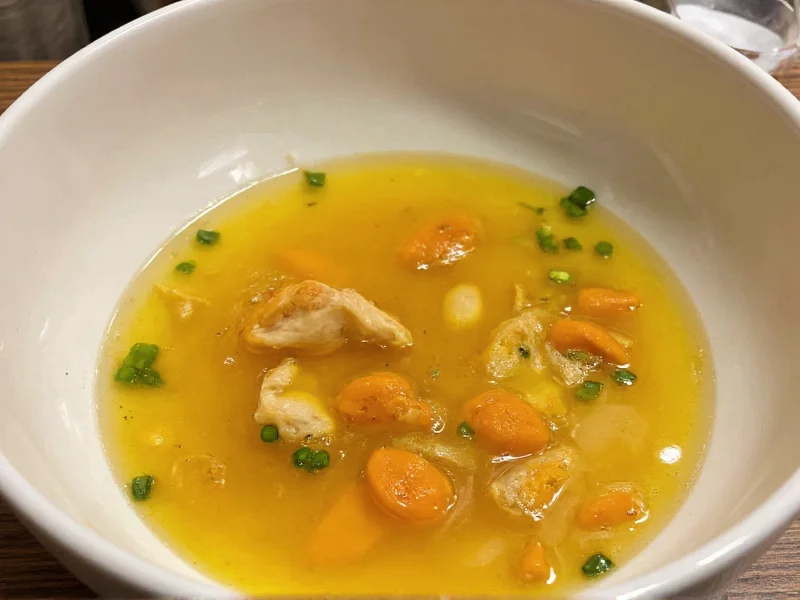Bouillon soup serves as a kitchen essential for building flavor in countless dishes. This versatile ingredient transforms simple recipes into deeply savory creations with minimal effort. Understanding its properties helps home cooks and professional chefs alike elevate their culinary results.
The Origins and Evolution of Bouillon
The concept of concentrated broth dates back centuries, with early forms appearing in Asian cuisines. Traditional French buillon (meaning 'broth') evolved into the modern dehydrated product we recognize today. In the 19th century, German entrepreneur Carl Heinrich Hesse developed the first commercial bouillon cubes, revolutionizing how cooks accessed consistent flavor.
Originally created as a preservation method, bouillon provided soldiers and travelers with portable nutrition. Today's versions maintain this practicality while offering diverse flavor profiles for global cuisines. The manufacturing process has refined significantly, balancing flavor concentration with ingredient quality.
How Bouillon Is Made: From Traditional to Commercial Production
Authentic bouillon begins with simmering meat bones, vegetables, and aromatics for hours to extract maximum flavor. The liquid then undergoes reduction and dehydration. Commercial producers use advanced techniques:
| Form | Production Method | Key Characteristics |
|---|---|---|
| Cubes | High-pressure compression of reduced stock with salt and seasonings | Long shelf life, intense flavor, requires dissolving |
| Granules | Spray-drying liquid stock mixture | Dissolves faster than cubes, consistent measurement |
| Liquid Concentrate | Reduced stock with preservatives | Convenient measuring, no dehydration |
| Powder | Freeze-drying process | Lightweight, dissolves instantly, delicate flavor |
Bouillon vs. Broth vs. Stock: Understanding the Differences
Many cooks confuse these terms, but key distinctions exist:
- Bouillon: Dehydrated concentrate requiring reconstitution; higher sodium content; shelf-stable
- Broth: Ready-to-use liquid made from simmered meat and vegetables; milder flavor; shorter shelf life
- Stock: Made primarily from bones for gelatinous texture; unseasoned base for sauces; richer body
While broth and stock serve as finished products, bouillon functions as a flavor foundation. The dehydration process concentrates flavors but often increases sodium levels. Low-sodium options address this concern while maintaining taste intensity.
Culinary Applications of Bouillon Soup
Beyond creating instant broth, bouillon enhances numerous dishes:
- Flavor base for soups, stews, and sauces
- Seasoning for rice, grains, and legumes
- Marinade component for meats
- Flavor booster for roasted vegetables
- Secret ingredient in meatloaf and meatballs
- Base for pan sauces and gravies
Chefs often use bouillon to layer flavors without adding liquid volume. A single cube dissolved in a small amount of hot water creates a concentrated flavor paste ideal for deglazing pans. For delicate dishes, dissolving bouillon in cold water prevents clumping.
Creating Homemade Bouillon
Artisanal bouillon offers superior flavor control and reduced sodium. The process requires patience but yields exceptional results:
- Simmer meat bones (chicken, beef, or fish) with vegetables for 4-12 hours
- Strain and reduce liquid by 75-90% through slow evaporation
- Cool slightly, then pour into ice cube trays
- Freeze until solid, then transfer to airtight containers
For vegetarian options, use mushrooms, tomatoes, and roasted vegetables as flavor bases. Adding a small amount of nutritional yeast provides umami depth. Properly stored, homemade bouillon maintains quality for 6 months in the freezer.
Storage and Shelf Life Considerations
Commercial bouillon products have impressive longevity when stored properly:
- Unopened cubes/granules: 18-24 months in cool, dry places
- Opened packages: 6-12 months when sealed tightly
- Liquid concentrates: 12 months unopened, 6 months refrigerated after opening
- Homemade frozen bouillon: 6 months for best flavor
Signs of spoilage include mold, off odors, or clumping that doesn't dissolve. While expired bouillon rarely becomes unsafe, flavor degradation affects dish quality. For optimal results, replace opened containers annually.
Nutritional Profile and Health Considerations
Bouillon's nutritional value varies significantly by formulation. Traditional versions contain:
- Moderate protein from meat extracts
- High sodium content (typically 800-1200mg per serving)
- Minimal fat and carbohydrates
- Vitamins and minerals from original ingredients
Health-conscious cooks can reduce sodium by using half the recommended amount and compensating with additional herbs. Vegetable-based bouillons provide potassium and antioxidants. When selecting products, check for artificial additives and excessive preservatives that diminish quality.
Maximizing Bouillon's Flavor Potential
Professional results require proper technique:
- Dissolve in hot (not boiling) water to preserve delicate flavors
- Add early in cooking for flavor integration
- Balance with acid (lemon juice or vinegar) to brighten flavors
- Use in place of salt for more complex seasoning
- Freeze excess dissolved bouillon in ice cube trays for portion control
For restaurant-quality results, bloom bouillon in a small amount of oil before adding liquids. This technique, called fondor, enhances flavor release. When substituting for fresh stock, reduce additional salt by 25-50% to account for bouillon's sodium content.











 浙公网安备
33010002000092号
浙公网安备
33010002000092号 浙B2-20120091-4
浙B2-20120091-4